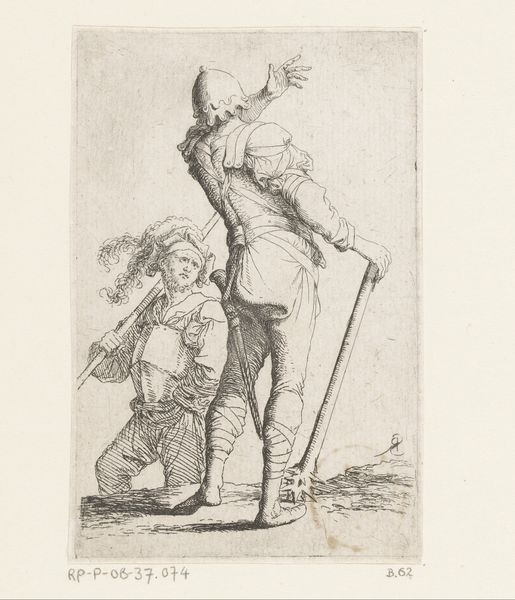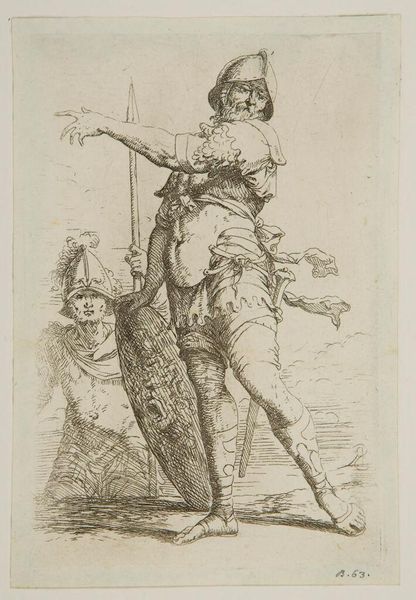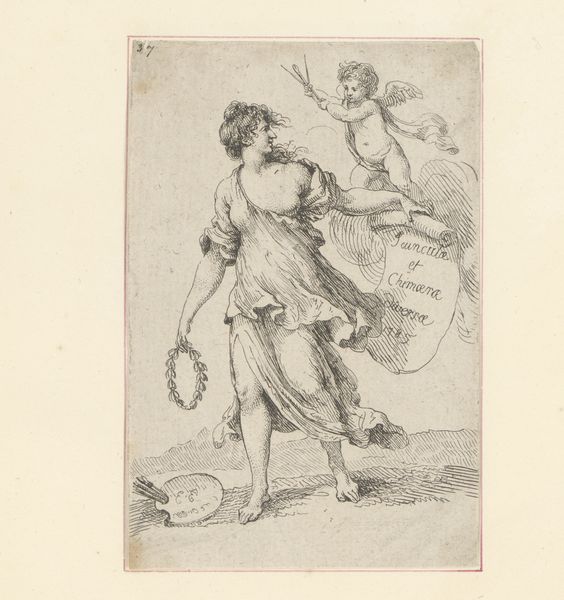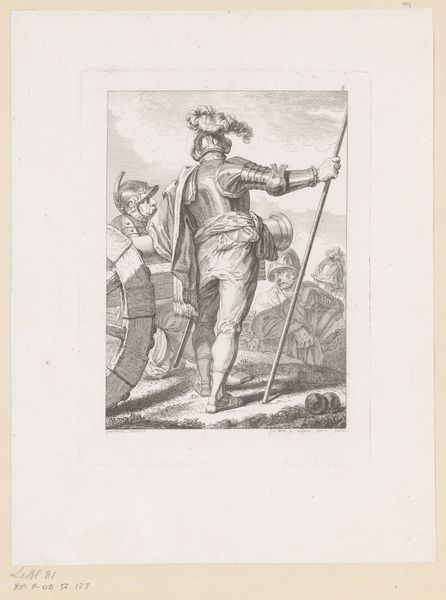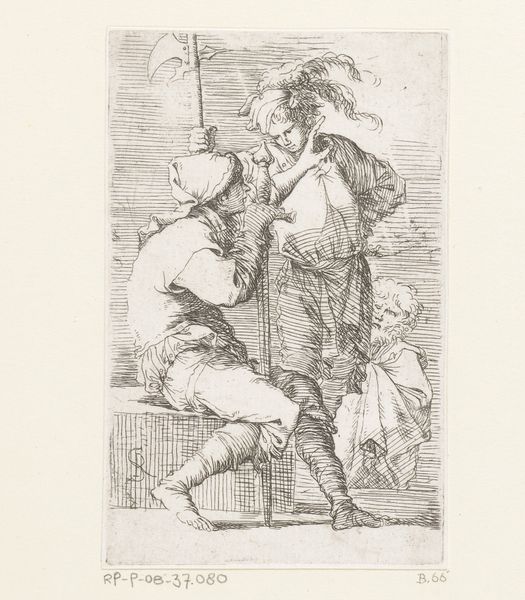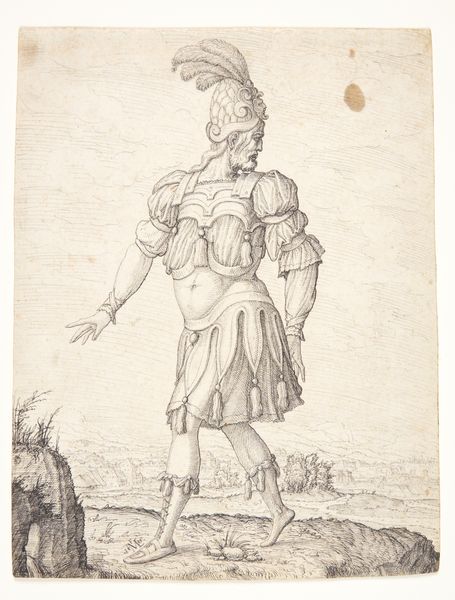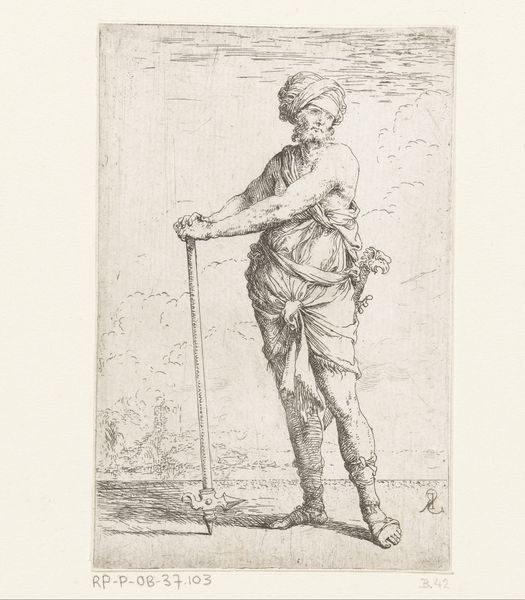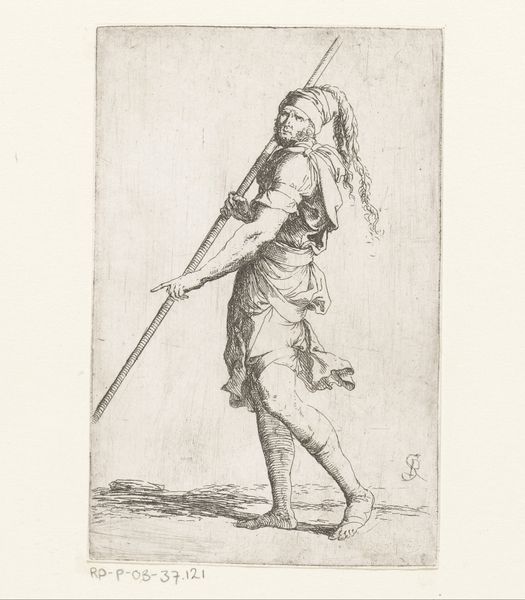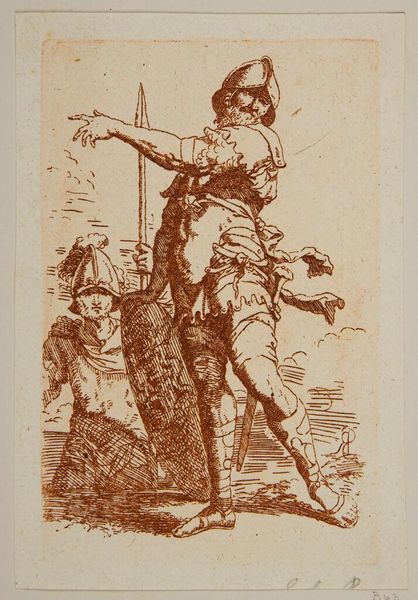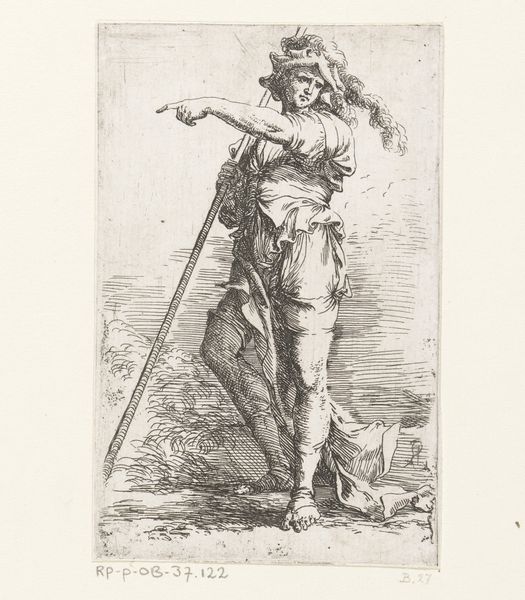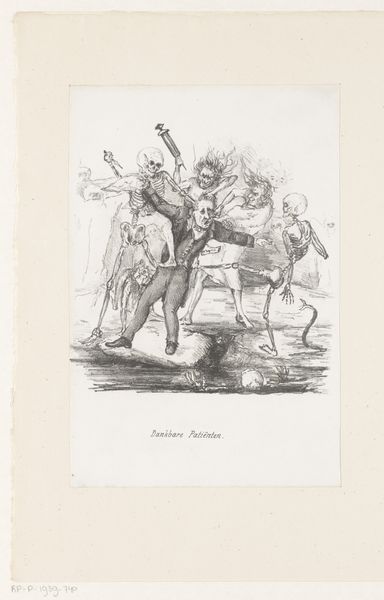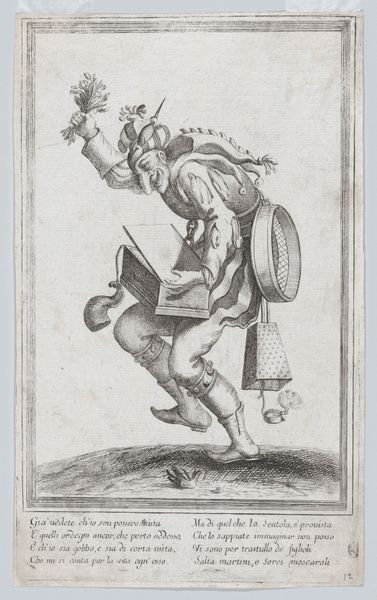
print, etching, engraving
#
baroque
# print
#
etching
#
pencil sketch
#
figuration
#
history-painting
#
engraving
Dimensions: height 141 mm, width 93 mm
Copyright: Rijks Museum: Open Domain
Editor: This etching, "Twee Soldaten," created around 1656-1657 by Salvator Rosa, features two soldiers rendered with very fine lines. It's interesting how much detail Rosa achieved using just etching and engraving. What can you tell me about the artistic approach here, given its historical context? Curator: From a materialist perspective, the process itself is key. Etching and engraving were not simply reproductive techniques; they were also productive ones, allowing for the dissemination of images and ideas within specific socio-economic conditions. Think about the access this print provided. Prior to it, viewing this type of imagery might have only been available to a much smaller audience who had access to paintings, or even direct experience with warfare. Consider how Rosa's skill with the needle contributes to his artistic brand. What impact might that have had on patronage at the time? Editor: So the very act of creating and distributing a print, not just the image itself, is significant? Curator: Precisely! It shifts our focus from the genius of the artist to the means of production and consumption. These prints were commodities. The labour involved, the accessibility of the final product, and its role in circulating ideas all need to be considered. How do you think the relatively low cost of the prints compared to, say, a painting, altered viewership of the work and access to art at the time? Editor: That makes a lot of sense. Thinking about the etching as a commodity and considering how these images became more broadly available really changes how I see it. Curator: Absolutely. Looking at art through a materialist lens can reveal hidden social and economic dynamics.
Comments
No comments
Be the first to comment and join the conversation on the ultimate creative platform.

